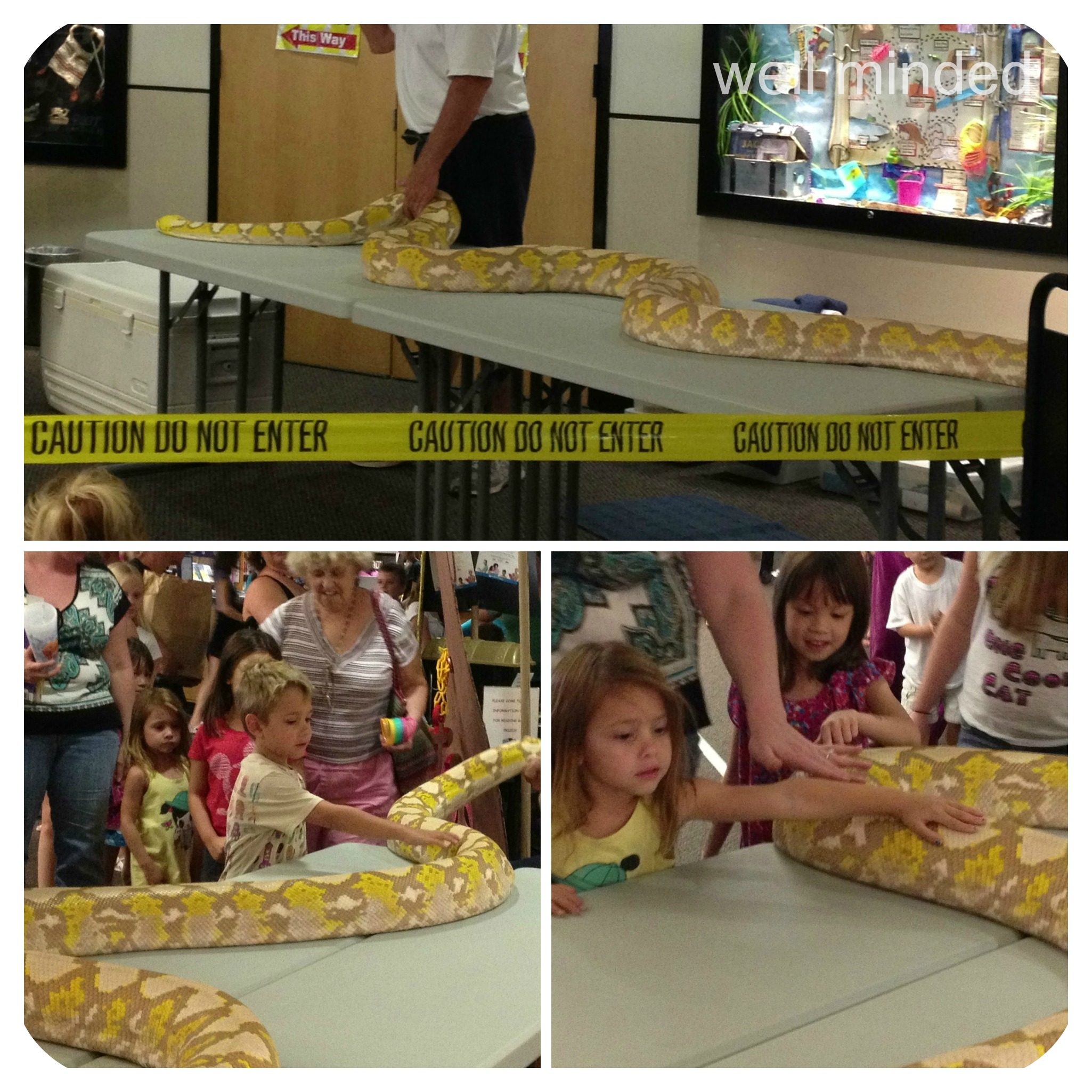Since summer is my busiest time as a pet sitter, our family typically stays close to home. With temps reaching 110°-plus, we are either in a pool or seeking out indoor activities to have some fun in-between pet sitting visits. We are fortunate that the Phoenix Public Library offers fabulous free programs and guest speakers, especially during the summer. One of our favorites each year is Rich Isle's Reptile Adventures.
Summer reptile adventures teach kids about #ReptileCare.
Rich, "the Reptile Man," has been obsessed with reptiles since he was a young boy, and he's become an expert, sharing his knowledge and his exotic reptiles with the public, touring all over the Phoenix Valley. He has had a personal collection of live reptiles for over 40 years. He tells his audience of youngsters that if they are interested in something, they should study and read all about it so that they can become experts, too (after homework, of course). He shares his passion with others.
Rich brings the live reptiles through the audience so kids can see them up close. He teaches about their characteristics, environment in the wild, their diet, defense mechanisms, and life cycles. Aside from getting to see some really awesome reptiles, the kids walk away with a broader knowledge and greater respect for these often-mysterious creatures. He lets the kids know which ones make great starter pets and which ones are better left to the experienced reptile wranglers.
Check out some of the cool creatures we got to see!
Sunset, a bearded dragon from Australia.
Slim, a blue-tongued skink.
Amarilla, an albino green iguana. She's only four, but when she grows up she'll be six feet long!
Pumpkin, a Tangerine Milk Snake. She'll grow to be seven feet long.
A piebald (she has random patches of white) Ball Python.
T-Bo, a 26-year-old Rhinoceros Iguana.
Theresa, a 9-year-old Python. She's only half grown, and that's only about half of her!
The kids got to pet Theresa.
I feel so lucky that my children and I get to experience these amazing creatures up close. What a rare opportunity and amazing hands-on learning experience. Rich is a big personality and keeps the kids really engaged, as if the reptiles aren't enough to do so.
Though we have a Sulcata Tortoise, my kids often talk about adopting another reptile, which I'm not opposed to, but we don't take adding a family member to our household lightly, so it may be a while. We'll have to do some more thorough research so we don't end up with a sixty-foot snake by accident. When we do decide to adopt one, I'll be sure to consult Rich before we do.
Do you have a reptile? Tell us about it!
YOU MIGHT ALSO ENJOY



















